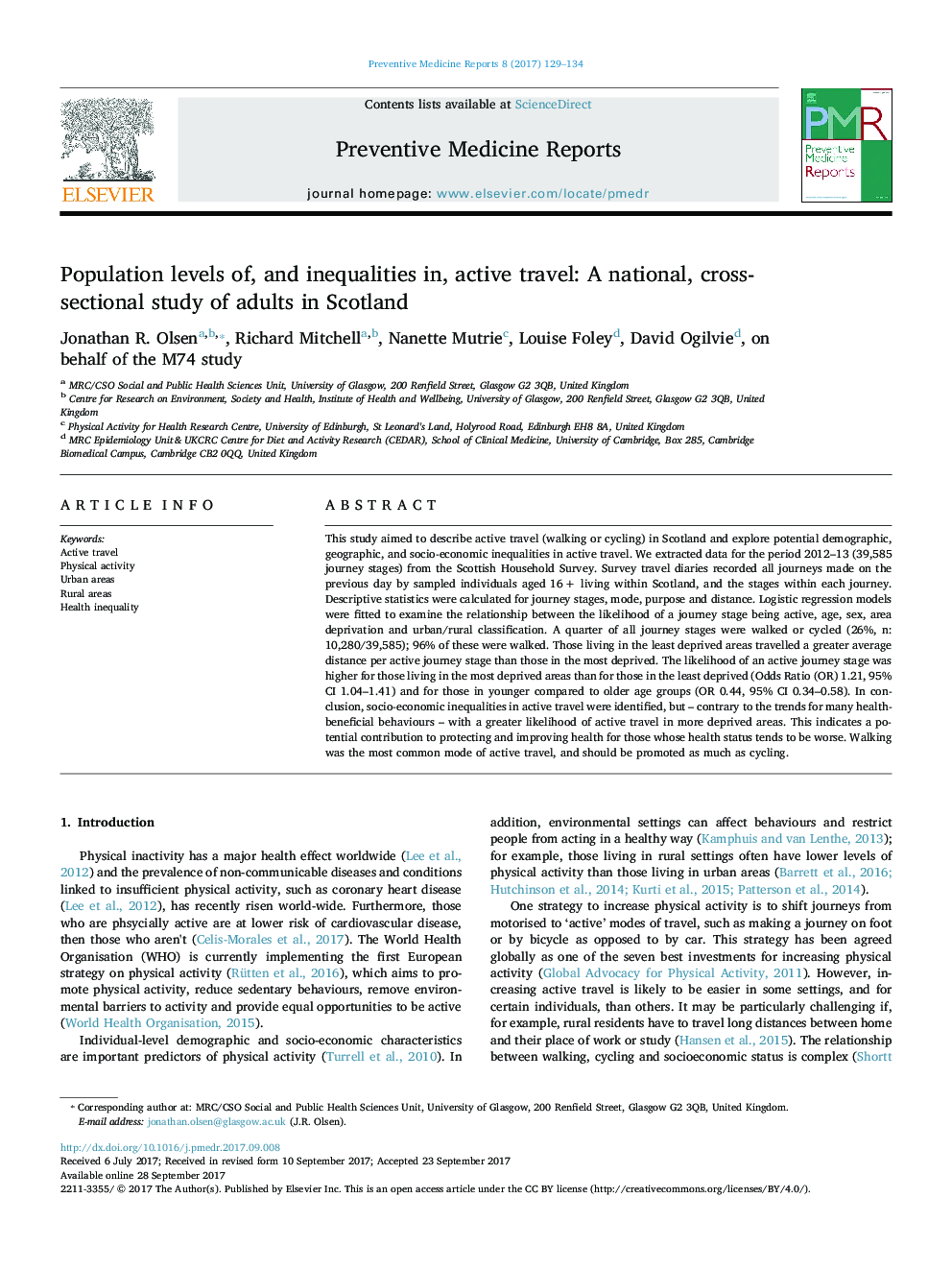| کد مقاله | کد نشریه | سال انتشار | مقاله انگلیسی | نسخه تمام متن |
|---|---|---|---|---|
| 5723617 | 1609084 | 2017 | 6 صفحه PDF | دانلود رایگان |
- A quarter of all journey stages were actively travelled in Scotland, UK and 96% of those were walked.
- The proportion of journey stages made by active modes was greater for younger than older individuals.
- People living in the most deprived areas were more likely to report active travel than those in the least deprived areas.
- Walking remains by far the most likely mode of active travel and should be promoted as much as cycling.
This study aimed to describe active travel (walking or cycling) in Scotland and explore potential demographic, geographic, and socio-economic inequalities in active travel. We extracted data for the period 2012-13 (39,585 journey stages) from the Scottish Household Survey. Survey travel diaries recorded all journeys made on the previous day by sampled individuals aged 16Â + living within Scotland, and the stages within each journey. Descriptive statistics were calculated for journey stages, mode, purpose and distance. Logistic regression models were fitted to examine the relationship between the likelihood of a journey stage being active, age, sex, area deprivation and urban/rural classification. A quarter of all journey stages were walked or cycled (26%, n: 10,280/39,585); 96% of these were walked. Those living in the least deprived areas travelled a greater average distance per active journey stage than those in the most deprived. The likelihood of an active journey stage was higher for those living in the most deprived areas than for those in the least deprived (Odds Ratio (OR) 1.21, 95% CI 1.04-1.41) and for those in younger compared to older age groups (OR 0.44, 95% CI 0.34-0.58). In conclusion, socio-economic inequalities in active travel were identified, but - contrary to the trends for many health-beneficial behaviours - with a greater likelihood of active travel in more deprived areas. This indicates a potential contribution to protecting and improving health for those whose health status tends to be worse. Walking was the most common mode of active travel, and should be promoted as much as cycling.
Journal: Preventive Medicine Reports - Volume 8, December 2017, Pages 129-134
